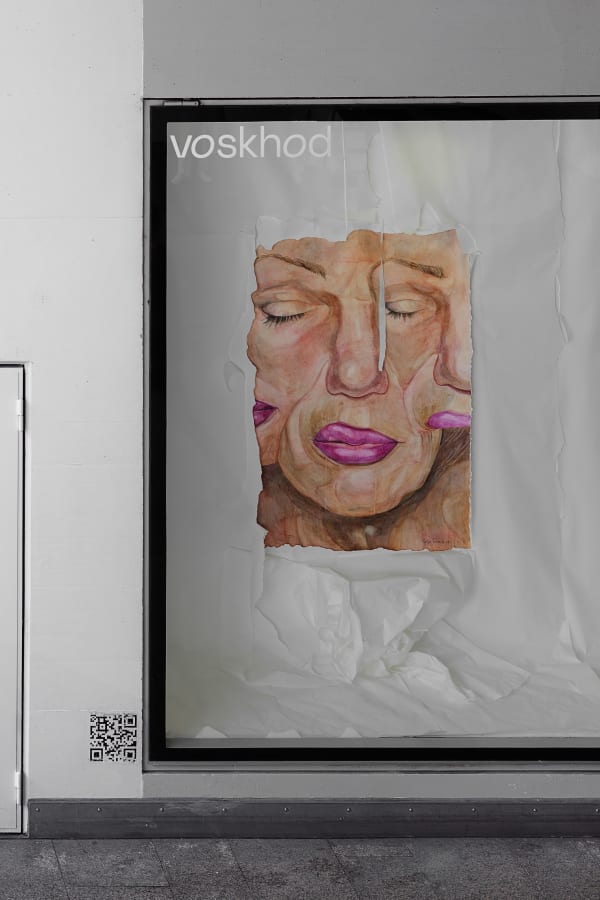This autumn Voshod Gallery is delighted to present the solo exhibition ‘The Fleeting Light on Your Folds’ by a London based artist Katya Tsareva which reveals the extent of our physical sensuality and vulnerability. The main idea feels like a time capsule, half buried in history and still humming with life. The exhibition digs understanding of the body itself: why it’s so difficult to inhabit, why we might want to escape or subdue it, why it remains a naked source of power. The free body's full power is not despite but because of manifest tenderness.
Katya Tsareva is examining the bodies adopting an academic painterly approach and what could go wrong, working this way through hundreds of distinguishing between them. The artistic approach is to show the body as a device for processing the external world: a conversion object, hoarding, transforming, discarding, stripping for parts.
The exhibition is purposely divided into two parts and set up in different cities and countries – London, the UK and Basel, Switzerland. The visitors are invited to experience the two diverse but interconnected expositions. The first one at the Brompton Chapel in London is focused on viewing the body as an initial element or cell. What does it actually mean to life inside of it? The site-specific installation ‘Tenderness’ as a set of surfaces features large-scale watercolors and hand stitched soft objects by Katya Tsareva. This is a metaphor of the unattainable second skin, so smooth and gleaming it is practically alien. The installation presented at the Сhapel serves for the profound attraction between pleasure and pain, hatred and desire.
The second part of the exhibition that follows Brompton is based in Voshod gallery space in Basel. The total window installation of large watercolors from the series ‘Tender’ completed with numerous little bits of torn paper reveals that the ideal of the body's beauty is administered as a form of self-oppression. Katya alters the photographs of figures, body fragments using collage, computer graphics and AI, achieving a new form-making for her works. The watercolors unlatch a whole suite of emotions, among them pleasure, attraction, even disgust. Nevertheless, these sets of opposing forces and the disparate tensions are in specific balance. The large watercolors are evidently the product of long, meticulous, repetitive labor. They are on their own begging the question of what forces were being mastered, what kind of longings assuage.
We are taught to see their bodies in parts and to evaluate each part separately: breasts, feet, hips, waistline, neck, eyes, nose, complexion, hair, and so on. Nothing less than perfection will do. Beauty is a phantom. The question is, what sort of phantom — will it give freedom or confinement? To be sure, beauty embodied in the body is a form of power. It is a power that negates itself, for this power is not one that can be chosen freely or renounced without social censure.











